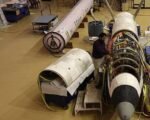At the forefront of tech supply chains, Japan and South Korea are making strategic moves to lessen their dependence on China’s critical materials.
Efforts to diversify tech material sources are ramping up in East Asia amid geopolitical tensions and supply chain concerns.
Sojitz’s Ambitious Chipmaking Initiative in Japan
When Japan decided to re-enter the chipmaking arena, Sojitz saw a golden opportunity. The Tokyo-based trading house is planning to set up a plant in Kyushu, mirroring Taiwan Semiconductor Manufacturing Company’s (TSMC) first Japanese factory. This new facility aims to process fluorspar into anhydrous hydrogen fluoride, potentially meeting up to 40% of Japan’s yearly demand for this essential chipmaking chemical.
Takashi Mizukami, manager of Sojitz’s fluorine business development section, emphasized collaboration. “We want manufacturers of semiconductors and battery materials who use hydrofluoric acid to join and build the supply chain together with us,” he stated. This joint venture with Mexico’s Mexichem Fluor highlights Japan’s push to secure a more stable and independent supply of key tech materials.
Despite strong governmental and corporate support, progress has been slower than expected. Japan is investing JPY 527 billion (USD 3.4 billion) in projects to boost domestic production in digitization and green industries, including Sojitz’s initiative. The industry ministry is also focusing on securing critical minerals like battery metals, rare earths, gallium, germanium, and uranium.

South Korea’s Strategic Mineral Classification and Global Outreach
South Korea isn’t sitting idle either. Last year, the Ministry of Trade, Industry and Energy flagged 10 minerals—including lithium, nickel, cobalt, manganese, and graphite—as “strategically critical.” The goal? To reduce reliance on any single country to below 50% by 2030.
Seoul has been actively reaching out to countries like Canada, Australia, Chile, and various African nations. These efforts include high-level forums and meetings aimed at securing a steady supply of vital minerals such as lithium, nickel, cobalt, and copper. This diversification is crucial for maintaining stability in South Korea’s tech industries, particularly in semiconductors and battery production.
Table: South Korea’s Targeted Minerals and Partner Countries
| Mineral | Target Countries | Purpose |
|---|---|---|
| Lithium | Australia, Chile | Battery production |
| Nickel | Canada, Australia | Stainless steel and battery components |
| Cobalt | Democratic Republic of Congo | Battery and alloy manufacturing |
| Manganese | South Africa, Australia | Steel production |
| Graphite | Canada, Mozambique | Battery anodes and electronics |
By spreading their sources, South Korea aims to build a more resilient supply chain that can withstand global disruptions.
Impact of the Inflation Reduction Act on Supply Chains
The US Inflation Reduction Act (IRA) has been a significant catalyst for these shifts. President Joe Biden’s legislation encourages companies to source materials outside of China to qualify for incentives, particularly in the electric vehicle (EV) sector.
LG Chem, a major South Korean chemical company, has already excluded China from its supply chains for its cathode materials factory in Tennessee. Set to complete by 2026, this move allows LG Chem to benefit from IRA tax credits by sourcing minerals from countries with US free trade agreements.
Similarly, POSCO partnered with Australian miner Pilbara Minerals to establish South Korea’s first lithium hydroxide plant in Gwangyang. This facility can produce 21,500 tons of lithium hydroxide annually, supporting the growing demand for EV batteries.
China’s Response: Tightening Export Controls
China isn’t taking these moves lightly. On November 16, the Chinese commerce ministry announced tighter export restrictions on materials like tungsten, graphite, and aluminum alloys. This move is seen as a strategic response to countries attempting to reduce their dependency on Chinese supplies.
Japanese companies are ramping up domestic production as a buffer. Toyota Tsusho built a lithium hydroxide plant in 2022, and Sumitomo Corporation is conducting feasibility studies for another project. Together, these efforts could cover Japan’s current demand of about 40,000 tons per year.
An executive from a Japanese firm highlighted the strategic importance, saying, “It is important that Japan has the ability to cover its demand [without China], so that China would not bother restricting exports of these minerals.” This sentiment echoes across the industry, where suppliers and manufacturers are keen to avoid over-reliance on a single source.
The Economic Balance: Cost vs. Security
China’s dominance in these materials isn’t just political—it’s economic. As Sojitz’s Mizukami pointed out, concentration of production often stems from economic efficiency. China can typically supply these materials more cheaply due to its extensive processing capabilities. For instance, while Australia leads in lithium production, countries like Japan and South Korea still depend on China for processed lithium products.
This economic reality presents a challenge: balancing cost with the need for a secure and diversified supply chain. As Japan and South Korea push for greater self-sufficiency, they must navigate the higher costs that come with developing alternative sources and processing capabilities.








